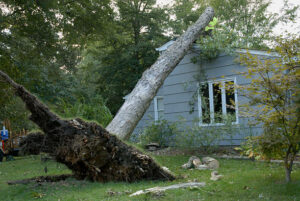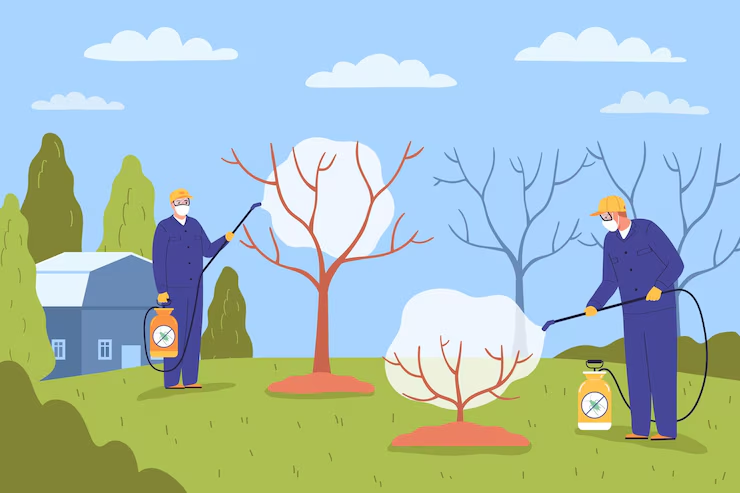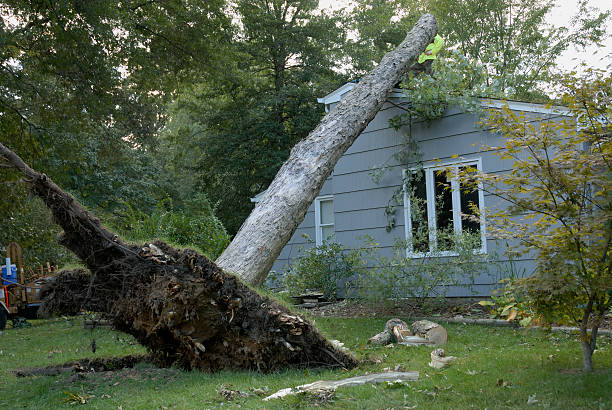Why Pest and Disease Resistance Matters for Fort Worth Homeowners
In Fort Worth, we battle scorching heat, unpredictable weather, and plenty of bugs. Planting trees that don’t constantly need spraying or doctoring saves time, cash, and stress. Plus, native trees are built to handle Texas. No guesswork.
Let’s break down what works best. Here’s a more detailed look at pest-resistant, disease-resistant native trees and how to pick the right ones for your Fort Worth yard.
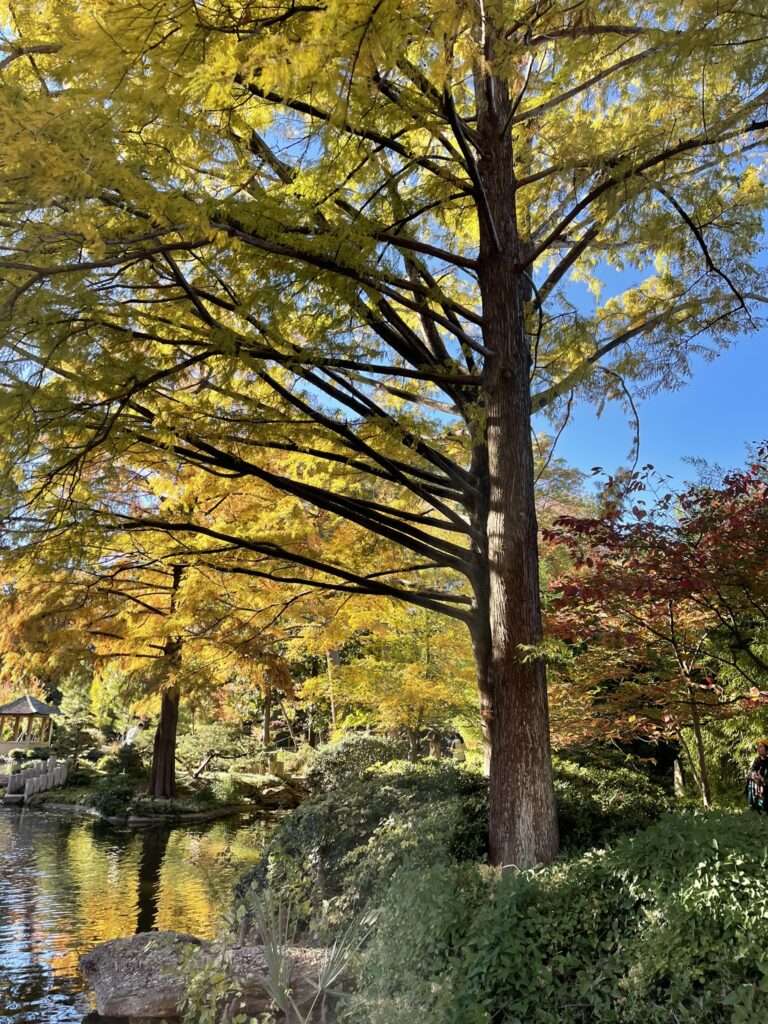
Top Pest-Resistant and Disease-Resistant Native Trees for Fort Worth (In Detail)
1. Texas Red Oak (Quercus buckleyi)
- Strengths: Drought-hardy, low-maintenance, fights off common oak pests and diseases.
- Ideal Use: Shady residential yards, fast growth, and brilliant fall colours.
- Soil Tip: Grows well in shallow or rocky soils.
2. Cedar Elm (Ulmus crassifolia)
- Strengths: Tolerates drought, bad soil, and city pollution. Laughs at elm beetles.
- Ideal Use: For wide open spaces and dense shade.
- Soil Tip: Great for clay-heavy soil common in Fort Worth.
3. Bald Cypress (Taxodium distichum)
- Strengths: Pest and disease resistant. Can thrive near water or dry land.
- Ideal Use: Big yards and wet areas. Gorgeous in group plantings.
- Bonus: Turns a stunning copper colour in fall.
4. Chinquapin Oak (Quercus muehlenbergii)
- Strengths: Resists oak wilt and common pests.
- Ideal Use: Wildlife-friendly spaces, produces acorns for birds and squirrels.
- Soil Tip: Excellent for rocky or tough soils.
5. Mexican Plum (Prunus mexicana)
- Strengths: Low-maintenance, pest-resistant.
- Ideal Use: Small yards and ornamental planting.
- Perk: Beautiful white flowers and small edible plums.
6. Eastern Redbud (Cercis canadensis)
- Strengths: Handles pests well if the soil drains properly.
- Ideal Use: Smaller urban yards.
- Visual Bonus: Iconic pink-purple flowers in spring.
7. Desert Willow (Chilopsis linearis)
- Strengths: Exceptionally drought-tolerant, pest-resistant.
- Ideal Use: Dry spots and decorative plantings.
- Perk: Summer-long trumpet blooms attract hummingbirds.
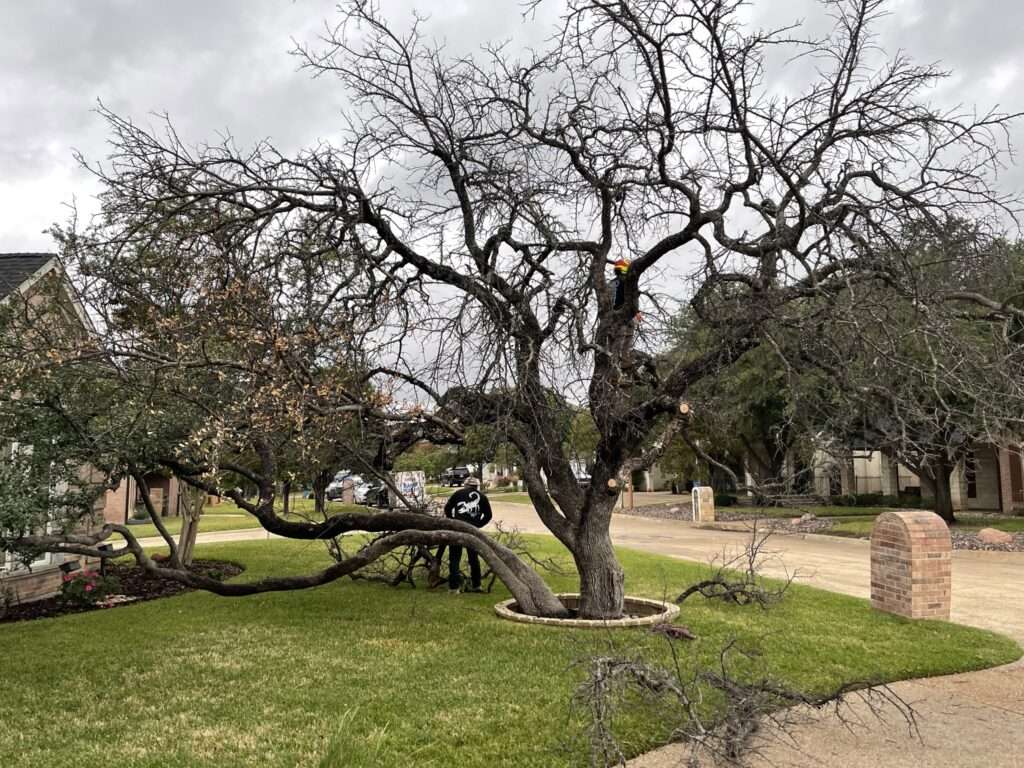
Quick Tips for Planting Success
- Pick healthy nursery stock.
- Plant in the cooler months (fall or early spring).
- Water deeply but not too often.
- Mulch well to hold moisture and fight weeds.
- Don’t over-fertilize—it attracts pests.
- Prune carefully to maintain strong shape.
What NOT to Plant in Fort Worth (High-Pest, High-Disease Trees)
- Silver Maple (weak wood, pest-prone)
- Bradford Pear (disease magnet)
- Siberian Elm (insect issues galore)
- Hackberry (aphids love it)
Stick to native. Your future self will thank you.
Native Trees and Their Role in Supporting Local Wildlife
- Cedar Elm & Oak: Provide shelter for birds.
- Mexican Plum: Fruit for wildlife.
- Desert Willow: Draws pollinators.
Native trees aren’t just less hassle; they feed local ecosystems.
🌳 1. Texas Red Oak (Quercus buckleyi)
-
Mature Height: 30–50 feet
-
Canopy Spread: 30–40 feet
-
Growth Rate: Medium to fast
-
Soil Preference: Well-drained rocky, limestone-based soils
-
Water Needs: Low once established
-
Sun Needs: Full sun to partial shade
-
Wind Resistance: Strong
-
Common Pests: Highly resistant; occasional galls or aphids
-
Disease Risks: Low susceptibility to oak wilt
-
Fall Color: Bright red to orange-red
-
Lifespan: 100–200 years
🌳 2. Cedar Elm (Ulmus crassifolia)
-
Mature Height: 50–70 feet
-
Canopy Spread: 40–60 feet
-
Growth Rate: Moderate
-
Soil Preference: Clay-heavy, alkaline or rocky soils
-
Water Needs: Low to moderate
-
Sun Needs: Full sun
-
Wind Resistance: Excellent
-
Common Pests: Resistant to elm leaf beetle and common elm diseases
-
Disease Risks: Very low
-
Fall Color: Yellow
-
Lifespan: 100+ years
🌳 3. Bald Cypress (Taxodium distichum)
-
Mature Height: 50–70 feet
-
Canopy Spread: 20–30 feet
-
Growth Rate: Moderate
-
Soil Preference: Wet, clay, or well-drained soils; tolerates poor drainage
-
Water Needs: Medium to high
-
Sun Needs: Full sun
-
Wind Resistance: Strong
-
Common Pests: Minimal; few known threats
-
Disease Risks: Resistant to root rot and canker
-
Fall Color: Coppery-orange
-
Lifespan: 500–600 years
🌳 4. Chinquapin Oak (Quercus muehlenbergii)
-
Mature Height: 40–60 feet
-
Canopy Spread: 50–70 feet
-
Growth Rate: Moderate
-
Soil Preference: Rocky or limestone-based soil
-
Water Needs: Low to moderate
-
Sun Needs: Full sun
-
Wind Resistance: Good
-
Common Pests: Resistant to oak pests and borer insects
-
Disease Risks: Resistant to oak wilt
-
Fall Color: Yellow to brown
-
Lifespan: 100–150 years
🌳 5. Mexican Plum (Prunus mexicana)
-
Mature Height: 15–25 feet
-
Canopy Spread: 15–20 feet
-
Growth Rate: Moderate
-
Soil Preference: Loamy or rocky soils, well-drained
-
Water Needs: Low
-
Sun Needs: Full sun to part shade
-
Wind Resistance: Moderate
-
Common Pests: Rarely affected
-
Disease Risks: Low
-
Flower Display: Showy white flowers in early spring
-
Fruit: Small, edible plums (late summer)
-
Lifespan: 40–50 years
🌳 6. Eastern Redbud (Cercis canadensis)
-
Mature Height: 20–30 feet
-
Canopy Spread: 25–35 feet
-
Growth Rate: Moderate
-
Soil Preference: Moist, well-drained soil
-
Water Needs: Medium
-
Sun Needs: Full sun to partial shade
-
Wind Resistance: Moderate
-
Common Pests: Minimal; occasional leaf spots
-
Disease Risks: Susceptible to root rot if soil poorly drains
-
Flower Display: Vibrant pink-purple flowers in spring
-
Lifespan: 20–30 years
🌳 7. Desert Willow (Chilopsis linearis)
-
Mature Height: 15–25 feet
-
Canopy Spread: 10–15 feet
-
Growth Rate: Fast
-
Soil Preference: Sandy, rocky, well-drained
-
Water Needs: Very low
-
Sun Needs: Full sun
-
Wind Resistance: Good
-
Common Pests: Virtually none
-
Disease Risks: Very low
-
Flower Display: Large pink-to-purple trumpet blooms, summer to fall
-
Attracts: Hummingbirds, bees, butterflies
-
Lifespan: 40–50 years
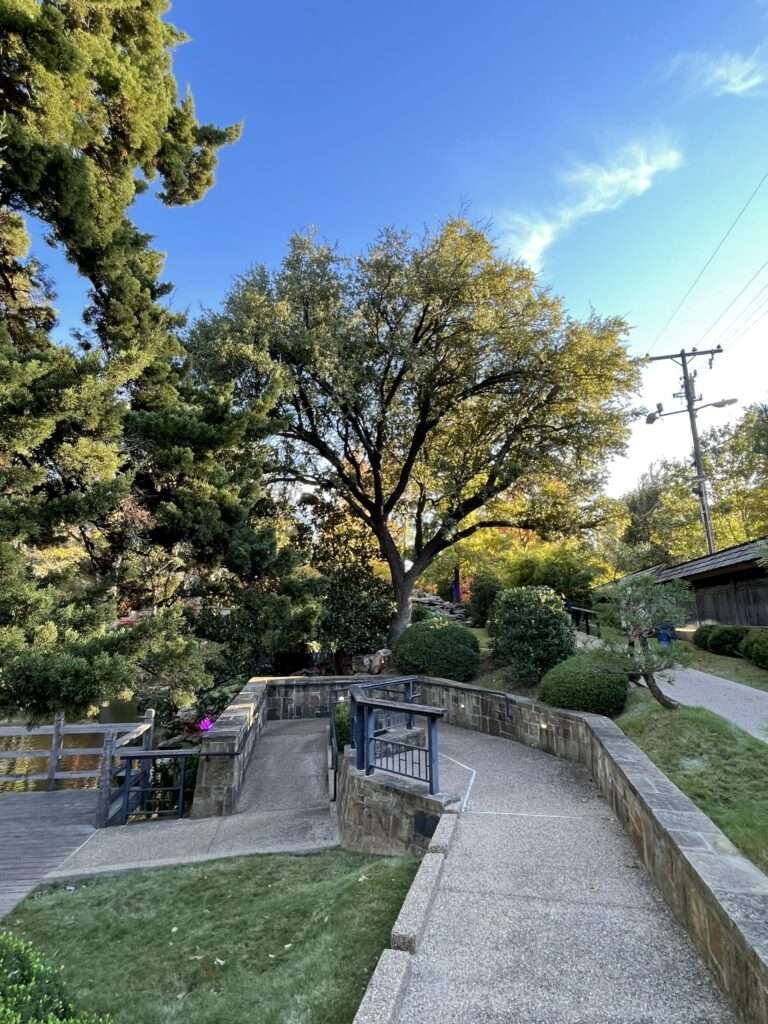
Internal Links to Help You Further:
- Tree Removal Services in Fort Worth
- Stump Grinding
- Emergency Tree Services
- Tree Cutting Services
- Lot Clearing
- Tree Uprooting Removal
- Tree Trimming and Pruning
- Our Projects
External Resources (Because good info matters)
- Arbor Day Foundation – Tree Guide
- US Forest Service – Trees
- National Wildlife Federation – Guide to Trees
- The Morton Arboretum – Trees and Plants
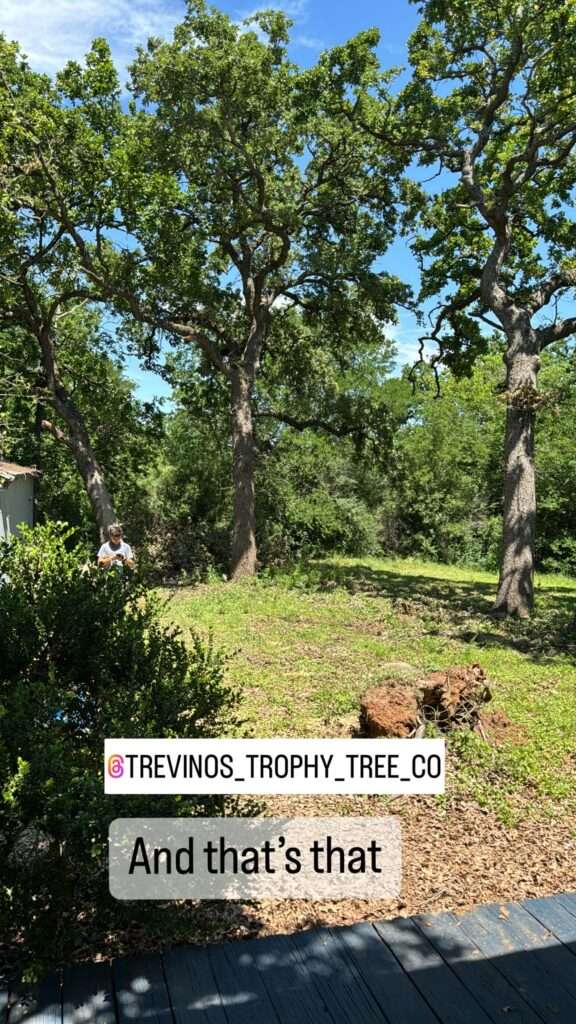
FAQs
Q1: How often should I water new native trees in Fort Worth? Weekly, deep watering for the first year. After that, they mostly fend for themselves.
Q2: When’s the best time to plant? Fall or early spring.
Q3: Are native trees really low-maintenance? Yes. Plant them right, and they need minimal care.
Q4: Can these trees handle Fort Worth storms? Most native species have deep roots and strong wood. They hold up better than imports.
Q5: How big will these trees get? Depends. Mexican Plum stays small, while Bald Cypress can get huge. Know your yard space.
Q6: Do I need to prune every year? A light annual prune helps. Focus on deadwood and shaping.
Q7: What’s the best mulch to use? Shredded hardwood or pine bark. Keep it away from the trunk.
Q8: Can I plant more than one type of tree? Absolutely. Diversity = fewer pest problems.
Q9: What if pests still show up? Don’t panic. Most native trees bounce back. Call us if you’re worried.
Need help choosing, planting, or maintaining trees for your Fort Worth yard? Trophy Tree Co. has your back.
📞 Call (817) 733-6804 or visit trophytreeco.com.


